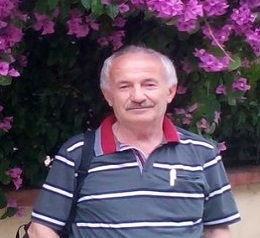Scholars International Conference on
Frontiers in Chemistry and Drug Discovery
THEME: "Frontiers in Drug Discovery, Development and Lead Optimization"
 25-26 Aug 2021
25-26 Aug 2021  ONLINE EVENT
ONLINE EVENT THEME: "Frontiers in Drug Discovery, Development and Lead Optimization"
 25-26 Aug 2021
25-26 Aug 2021  ONLINE EVENT
ONLINE EVENT 
Firat University, Turkey
Title: Physicochemical Factors and Thermoresponsive Reactions in Shape Memory Alloys
Osman Adiguzel graduated from Department of Physics, Ankara University,
Turkey in 1974 and received PhD- degree from Dicle University,
Diyarbakir-Turkey. He studied at Surrey University, Guildford, UK, as a post
doctoral research scientist in 1986-1987, and his studies focused on shape
memory alloys. He worked as research assistant, 1975-80, at Dicle University
and shifted to Firat University in 1980. He became professor in 1996, and he
has been retired due to the age limit of 67; following academic life of 45
years.
He published over 60 papers in international and national journals; He
joined over 120 conferences and symposia in international and national level as
Plenary Speaker, Keynote Speaker, Invited speaker, speaker or Poster presenter.
He served the program chair or conference chair/co-chair in some of these
activities. In particular, he joined in last even years (2014 - 2020) over 80
conferences as Speaker, Keynote Speaker and Conference Co-Chair organized by different
companies in different countries.
Additionally, he retired at the end of November 2019,
and contributed with Keynote/Plenary Speeches to 12 Virtual/Webinar Conferences
in the first year of his retirement, 2020.
Dr. Adiguzel served his directorate of Graduate School of Natural and Applied Sciences, Firat
University in 1999-2004. He supervised 5 PhD- theses and 3 M.Sc theses. He is
also Technical committee member of many conferences. He received a certificate which is being awarded to
him and his experimental group in recognition of significant contribution of 2 patterns to
the Powder Diffraction File – Release 2000. The ICDD (International Centre for Diffraction Data) also
appreciates cooperation of his group and interest in Powder Diffraction File.
Metallic alloys have different phases at different conditions and these phases are described in phase diagrams as alloy composition-temperature, or composition-pressure dependent. Shape memory alloys are also at different phases depending the alloy compositions and exhibit a peculiar property called shape memory effect in ?-phase region. These alloys are very sensitive to temperature and other external conditions, and crystal structures turn into the other structures with the variation of temperature and stressing. On cooling, the ordered parent ? phase structures turn into twinned martensite structure along with lattice twinning by means of thermal induced martensitic transformation, and twinned structures turn into the detwinned martensite structure by means of stress induced martensitic transformation with deformation. Lattice vibrations (phonons), atomic bonds, internal frictions and interatomic interactions play an important role in the processing of transformation. These interactions are described by potential functions between atom pairs, pair wise potential function and embedded atom electron cloud potential functions. Thermal transformation occurs in atomic scale in the material on cooling from parent phase region, and interatomic interactions govern this transition. Shape memory is characterized by the recoverability of two certain shapes of material at different temperatures. These alloys possess two unique abilities: the capacity to recover large strains and to generate internal forces during their activation. The basis of this phenomenon is the stimulus-induced phase transformations, martensitic transitions, which govern the remarkable changes in internal crystalline structure and properties of the materials. These alloys exhibit another property called superelasticity, which is performed in only mechanical manner by deforming material in parent phase region and recover the original shape on releasing the stress in superelastic manner. Copper based alloys exhibit this property in metastable ?-phase region. Lattice invariant shear is not uniform in these alloys, and gives rise to the formation of layered structures, like 3R, 9R or 18R depending on the stacking sequences on the close-packed planes of the ordered lattice. In the present contribution, x-ray diffraction and transmission electron microscopy (TEM) and differential scanning calorimetry (DSC) studies were carried out on two copper based CuZnAl and CuAlMn alloys. X-ray diffractograms taken in a long-time interval show that locations and intensities of diffraction peaks change with the aging time at room temperature. This result refers to the rearrangement of atoms in diffusive manner.